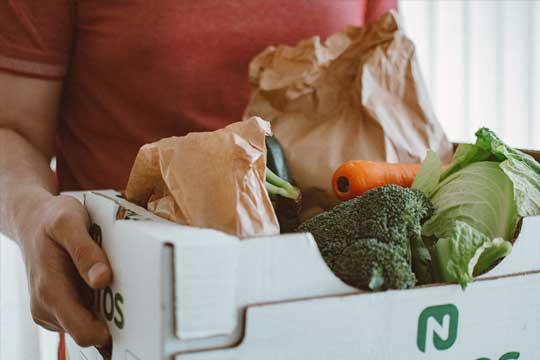How to ship food and perishables
Shipping delicate goods like food and other perishable items comes with strict requirements to ensure safety and freshness when items arrive at their destination.
Certain types of produce require temperature controlled shipping to remain fresh for customers. For instance, citrus fruits can sometimes be shipped through standard truckload shipping thanks to their tough outer skin. Other refrigerated foods, like fragile vegetables and leafy greens, require temperature controlled service to maintain their freshness.
Because there are so many different types of perishable foods, including produce varieties, it's important to make sure you spend wisely on food shipping costs.
Shipping food cost factors to consider
- Trailer temperature: Perishable shipping costs are highly impacted by the temperature of the trailer used, especially since both perishable and dry items can be included in temperature-controlled shipping. Keep in mind, the more influence temperature has on an item's stability, the greater impact it will have on your overall shipping cost.
- Delivery windows: Perishable freight shipping comes with peak times and tight delivery windows. Make sure you know the speed and stability requirements for your goods to help avoid spoilage.
- Destination: Shipping food cross country is going to be more expensive than shipping locally. Crossing state borders can involve complicated logistics and multiple truck transitions.
- Packaging: Properly preparing and packaging food and produce will set any shipment up for success. For refrigerated foods, insulation like Styrofoam or insulated liners, is always recommended to reduce the transfer of heat through packing container walls. Additionally, gel coolants or dry ice can be ideal for certain perishable frozen foods.
Understanding how produce shipping works can be complicated, but once you have it nailed down, you’re ready to ship. As with any process, consider working with a freight service provider, like Freightquote by C.H. Robinson, to help avoid delays and maintain freshness.

The key to shipping fresh produce
Get a firm grasp on the basics of produce shipping efficiencies and learn how to make temperature controlled shipping work for your business.
Read the blogChoose the right carrier when shipping perishables
When using our online quoting tool, select temperature controlled and enter your shipment details to see quotes from carriers that can accommodate your needs Choosing the right carrier can help ensure your refrigerated freight is handled with care.
When carriers handle the food shipping, they must take several critical factors into account—from the temperature of the trailer to contingency plans. No matter what, it is extremely important to be on the same page as your carrier. After all, a temperature increase of just 2 degrees Fahrenheit could decrease the shelf life of your perishable freight by up to 50%.
Access the large Freightquote network of carriers and compare your options by using LTL carrier ratings and testimonials to help you make informed decisions about which carrier is right for your next food shipment.

How to prepare and package food for shipping
See what it takes to select packaging that will protect your freight and keep it at the desired temperature.
Read the blogCommon questions when shipping food
What type of trailer should I use to ship food?
If you are shipping canned or dry goods, you will most likely end up using a dry van trailer. These types of trailers are great for non-perishable foods since they are affordable and protect freight from the elements.
When shipping perishables, you will need refrigerated trucking services. Refrigerated trailers allow you to control the temperature, which is ideal for maintaining the integrity of your perishable freight.
What types of food are the most time-sensitive to ship?
The most perishable foods are typically produce, fresh meats, and dairy. Shipping these foods requires a strict, timed course of action to get your shipment from origin to destination. Consult with shipping experts and follow food safety guidelines when shipping perishable food items.
Will my pickup and delivery windows be affected when shipping food?
A When it comes to shipping food and perishables, you can expect to experience longer loading and unloading times at the dock due to the fragile nature of the freight. Plan ahead for these longer wait times and account for possible delays. Knowing what to expect at pick-up can help ensure you don’t end up with spoiled goods.

